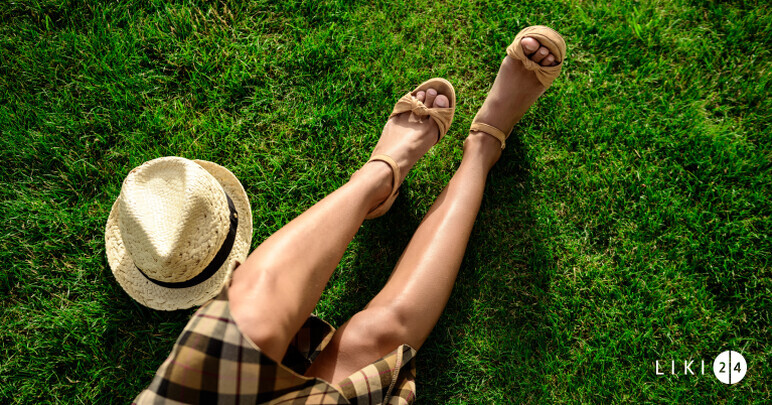How does varicose veins manifest?
Varicose veins can also be associated with swelling of the legs, pain in the legs, a feeling of heaviness in the legs and cramps. Sometimes varicose veins can limit activities. Symptoms may worsen when standing or sitting for long periods of time and may improve when lying down or lifting your legs. There are several types of varicose veins. Primary varicose veins occur without a favorable condition and usually have a genetic or inherited component. Secondary varicose veins usually occur after an episode of acute venous thrombosis.
Complications of varicose veins
Varicose veins can sometimes be associated with more severe symptoms such as bleeding, blood clots in varicose veins or chronic venous insufficiency. Varicose veins near the surface of the skin can sometimes bleed after a minor injury, and the bleeding can be difficult to stop. Blood clots can also sometimes form in varicose veins. Blood clots can lead to conditions such as thrombophlebitis (swelling or inflammation of the veins in the leg) or deep vein thrombosis. Some people with varicose veins may develop chronic venous insufficiency.
Remember that varicose veins are NOT the same asspiderveins. Both are venous diseases, but they look different. Spider veins are smaller and thinner than varicose veins. They look cobweb-like, red or blue, and are close to the surface of the skin. They are not usually painful. They can appear anywhere on the body, most often behind the knee, on the legs or on the face. Varicose veins usually occur on the legs.
Why do varicose veins occur?
Varicose veins occur when blood circulation in the veins does not work properly. Veins have one-way valves that prevent blood from flowing backwards. When these valves don't work properly, the blood starts to build up in the veins and stops circulating as it should. Because of this build-up, the veins enlarge.
Some risk factors for varicose veins include pregnancy, menopause, old age, prolonged standing, obesity or a family history of varicose veins.
What does varicose vein treatment involve?
Treatment depends on the severity of the varicose veins, the symptoms present and the associated problems. Lifestyle measures are recommended to prevent aggravation and sometimes relieve symptoms. These recommendations include physical activity and avoiding sedentary lifestyles, healthy eating, avoiding prolonged standing or standing with one foot on top of the other. Depending on how severe your symptoms are, your doctor may recommend a combination of treatments and preventive measures. Keep in mind that new varicose veins can form even after treatment or that you may need treatment more than once.
The aim of treatment is to relieve symptoms, prevent varicose veins from worsening, improve the appearance and prevent serious complications such as bleeding.
Sometimes doctors may recommend compression stockings. They put a degree of pressure on the legs so blood can flow more easily to the heart. They also reduce edema or swelling. The level of compression varies. If lifestyle changes or treatments recommended by your doctor don't work or if varicose veins cause severe pain, your doctor may recommend an invasive procedure.
Varicose vein disease drug treatment - medicines and ointments
Various treatments for varicose veins may be recommended in the form of medications, ointments or supplements. The mode of action of these circulatory disease medications can vary. They usually help veins, capillaries and lymphatic vessels to function properly. They support the normal tone of the vascular walls and reduce the sensation of heavy legs.
Such supplements for varicose veins may contain a variety of ingredients, notably diosmin, hesperidin, grape seed extract and chestnut extract.
An example of a varicose vein medication is Endolex, available in tablet and gel or ointment form. Another medicine for varicose veins is Divenoxin, based on diosmin, hesperidin, hawthorn extract, vitamin E, vitamin C, folic acid and vitamin B12. Varixinal contains cranberry extract, gotu kola, wild chestnut, thorn extract, vitamin C and hesperidin. This mix of ingredients improves leg comfort, supports normal blood vessel function, protects circulation. Another varicose veins supplement is Devaricid, based on diosmin and hesperidin, which improves venous tone, reduces venous stasis, increases capillary resistance, supports lymphatic flow and drainage, reducing edema.
Ointments for varicose veins act by anticoagulant effect, improving venous tone, increasing the resistance of blood vessels and reducing the sensation of heavy legs. They may contain several types of ingredients. For example, Hepathrombin cream contains heparin sodium, dexpanthenol and allantoin, with anticoagulant and tissue regenerating effects. Troxevasin gel contains troxerutin and is used for topical symptomatic treatment of varicose veins, thrombophlebitis and chronic venous insufficiency. Another varicose vein gel is Alle gel, based on heparin sodium and diclofenac sodium - it is beneficial in chronic venous disease, varicose veins and phlebitis.
How do we prevent varicose veins?
We can't always prevent varicose veins, especially when there are genetic causes. However, there are some measures to help prevent varicose or varicose veins from forming or worsening:
- Avoid standing for long periods of time. When sitting, raise your legs slightly to help relieve pressure inside the veins in your legs. Lying down with your legs elevated slightly above heart level for a few minutes a few times a day can lower the pressure in the veins and help blood return to the heart.
- Reduce excess body weight and maintain a healthy weight. This will improve blood flow and relieve pressure on the veins.
- Exercise to improve your circulation. Stay physically active to help blood circulate better through your veins. Walking and exercise make your leg muscles contract, which can help blood flow back to your heart and keep it from pooling in your veins. However, strenuous exercise, especially if it involves lifting weights, could worsen varicose veins. Before starting any exercise program, talk to your doctor about what level of physical activity is right for you.
- Avoid high heels or shoes that restrict ankle movement. Some shoes can affect blood flow in the veins in your legs.
- Give up smoking -vein damage from smoking greatly increases the risk of developing varicose or varicose veins.



 Wellness
Wellness  Fitness
Fitness  Nutrition
Nutrition  Beauty
Beauty  Wellness
Wellness  341 Views
341 Views 




 Previous Article
Previous Article 







